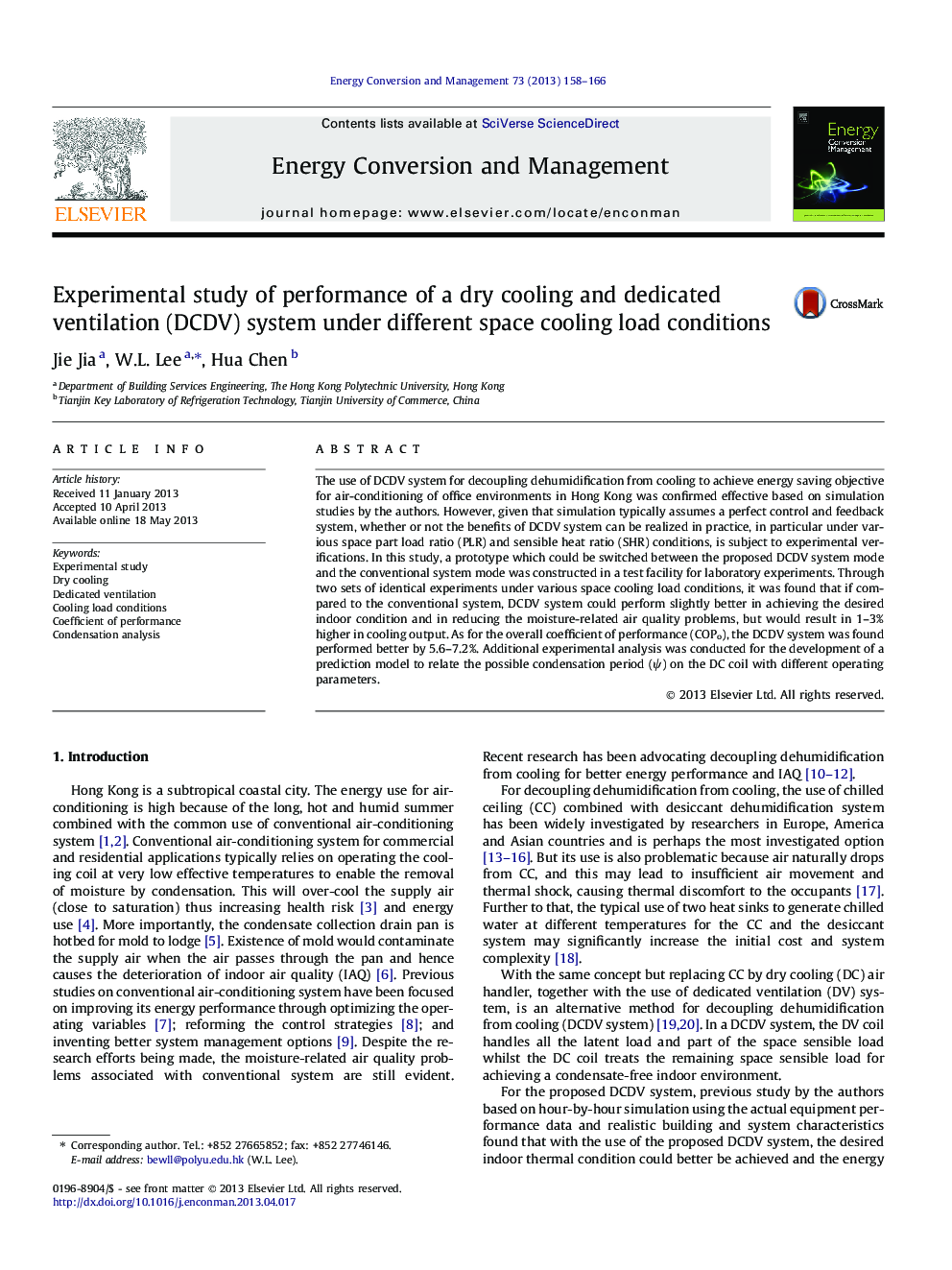| Article ID | Journal | Published Year | Pages | File Type |
|---|---|---|---|---|
| 764249 | Energy Conversion and Management | 2013 | 9 Pages |
•This is an experimental study of the use of DCDV system for achieving the decoupling and energy saving objectives.•The study focuses on side-by-side comparison of the DCDV and conventional systems.•DCDV system can better achieve the desired space air conditions and is more energy efficient.•A prediction model has been developed to relate the possible condensation period with different operating parameters.•The results are useful for wider application of DCDV system.
The use of DCDV system for decoupling dehumidification from cooling to achieve energy saving objective for air-conditioning of office environments in Hong Kong was confirmed effective based on simulation studies by the authors. However, given that simulation typically assumes a perfect control and feedback system, whether or not the benefits of DCDV system can be realized in practice, in particular under various space part load ratio (PLR) and sensible heat ratio (SHR) conditions, is subject to experimental verifications. In this study, a prototype which could be switched between the proposed DCDV system mode and the conventional system mode was constructed in a test facility for laboratory experiments. Through two sets of identical experiments under various space cooling load conditions, it was found that if compared to the conventional system, DCDV system could perform slightly better in achieving the desired indoor condition and in reducing the moisture-related air quality problems, but would result in 1–3% higher in cooling output. As for the overall coefficient of performance (COPo), the DCDV system was found performed better by 5.6–7.2%. Additional experimental analysis was conducted for the development of a prediction model to relate the possible condensation period (ψ) on the DC coil with different operating parameters.
